The Design Commission approved Block 216, a 35-story mixed use building designed by GBD Architects and PLACE landscape architects. The project will include retail, office, hotel, and residential condominium uses, with a 342 stall underground parking garage. The project is being developed by BPM Real Estate Group.
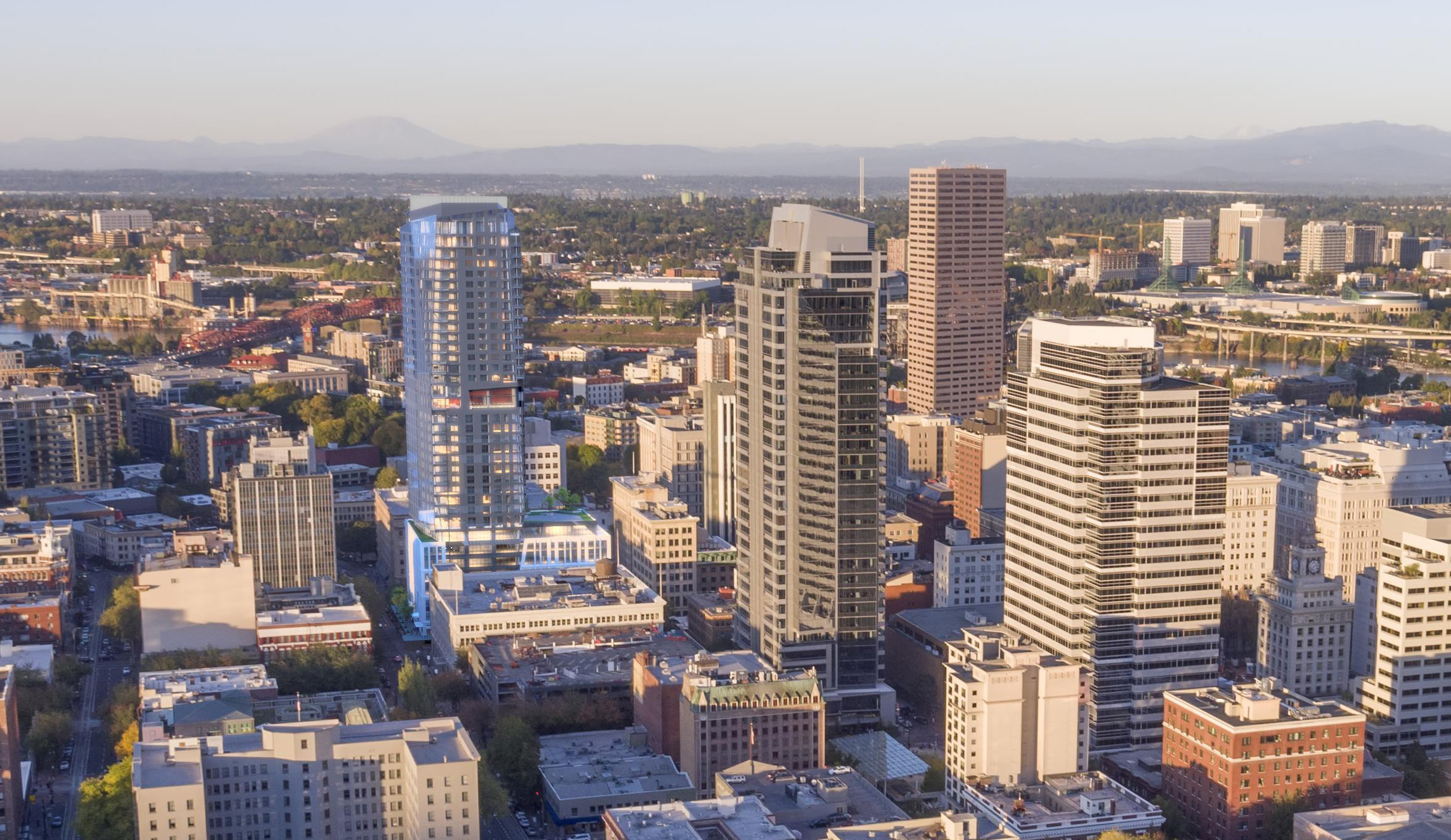
The project site is the full block bound by SW 10th, Washington, 9th and Alder. The block, owned by the Goodman family controlled Downtown Development Group, is mostly used for surface parking. It is however better known for the food carts that line the perimeter of the block. News that the site could be redeveloped broke in April 2018.
The 459’-11 1/2” tall tower would be located on the western half of the block, and oriented on a north-south axis, in order to minimize the amount of shadow cast on O’Bryant Square. The nearby park has been closed since March 2018, due to structural issues with the parking garage located beneath the park. Portland Parks & Recreation currently has funding to study redevelopment options for the park, and hopes to have it open again by 2023.
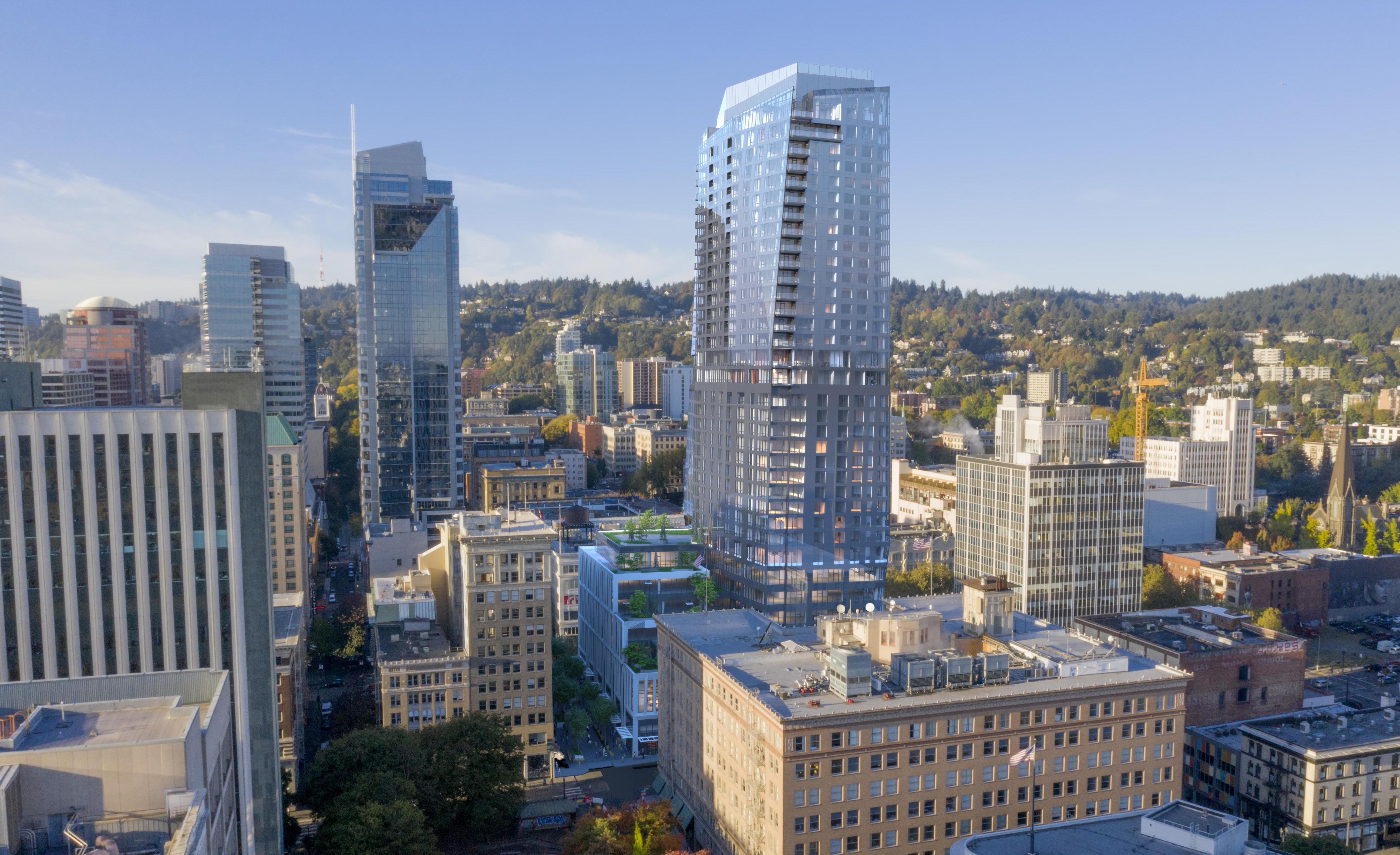
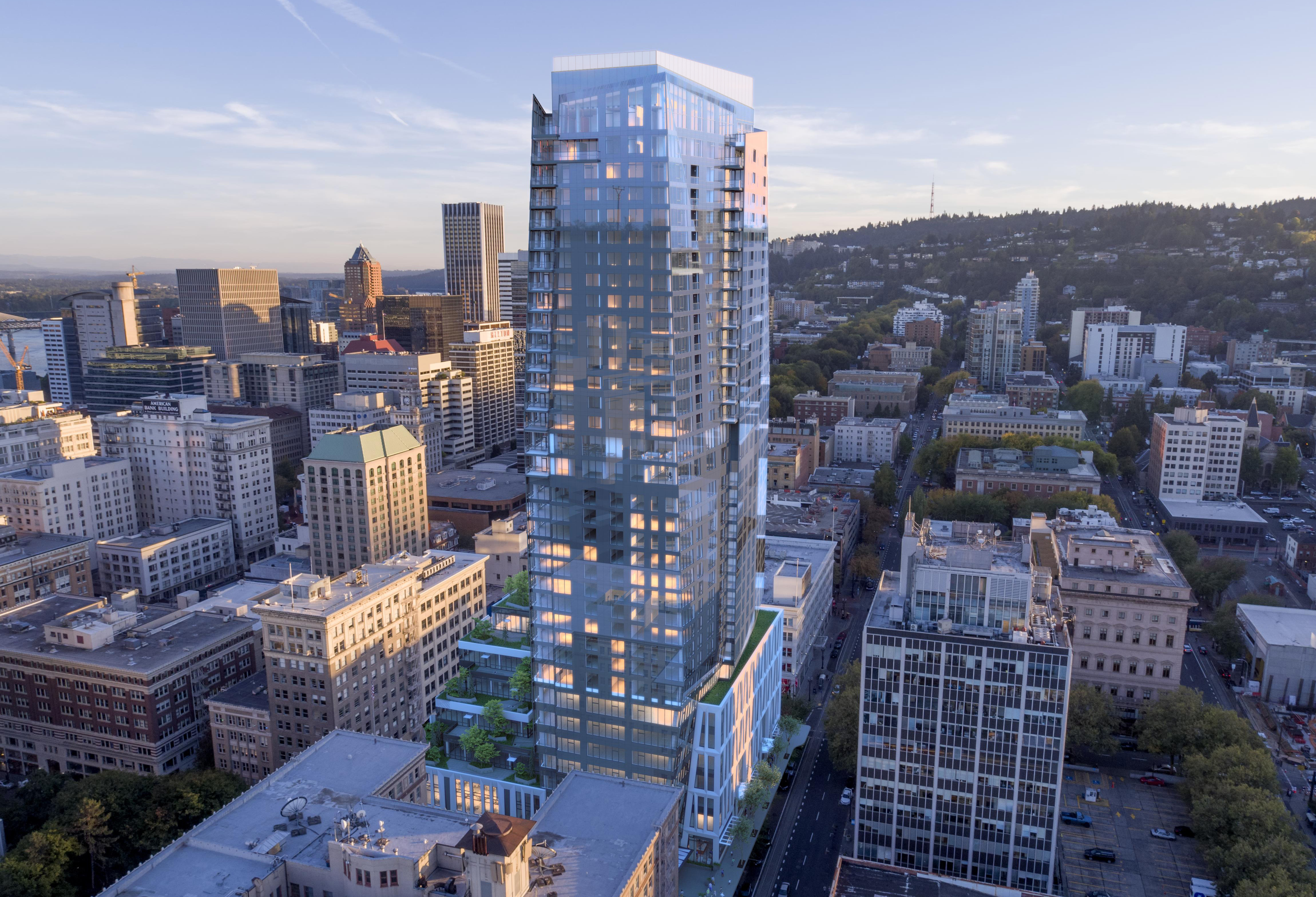
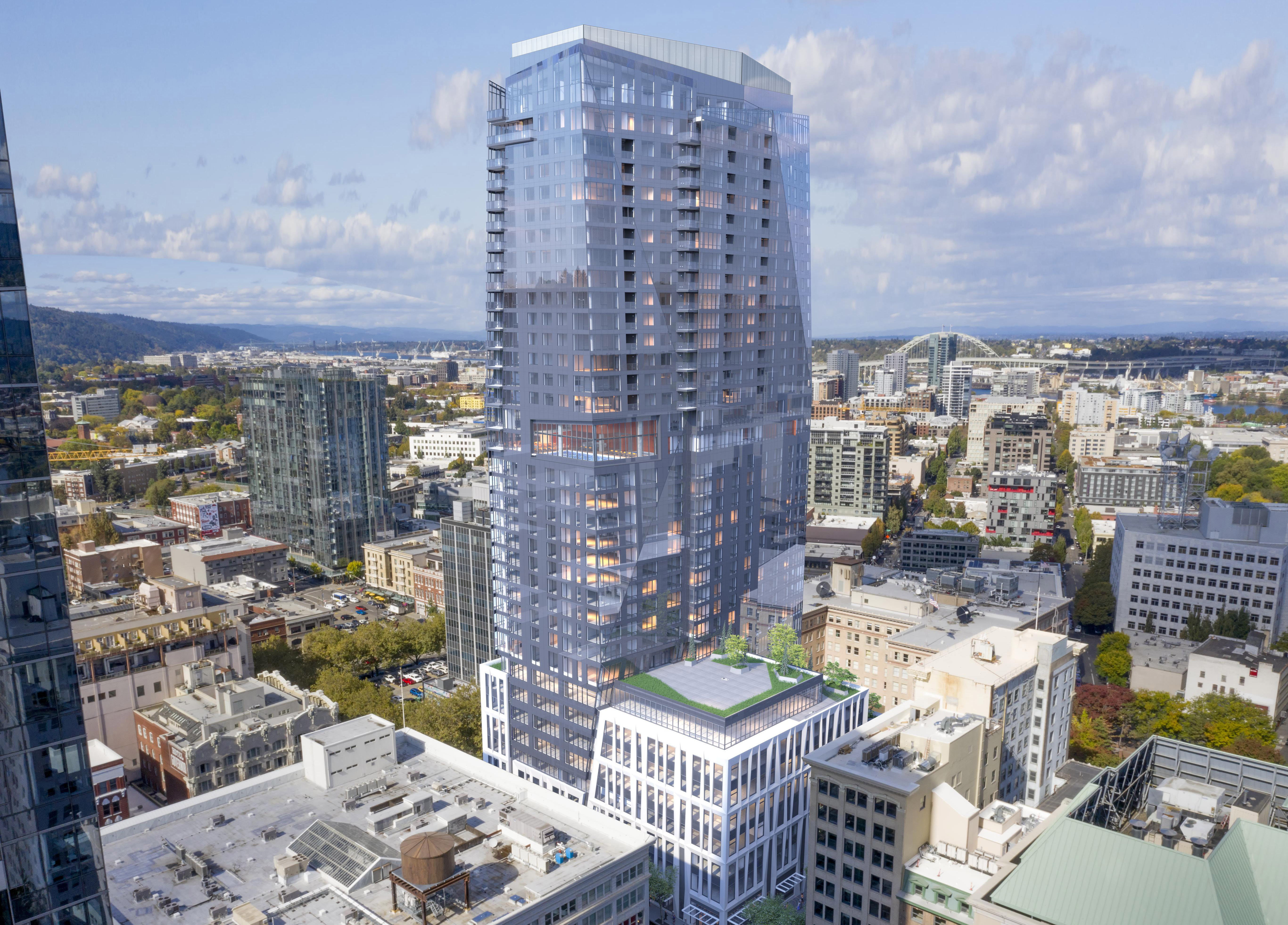
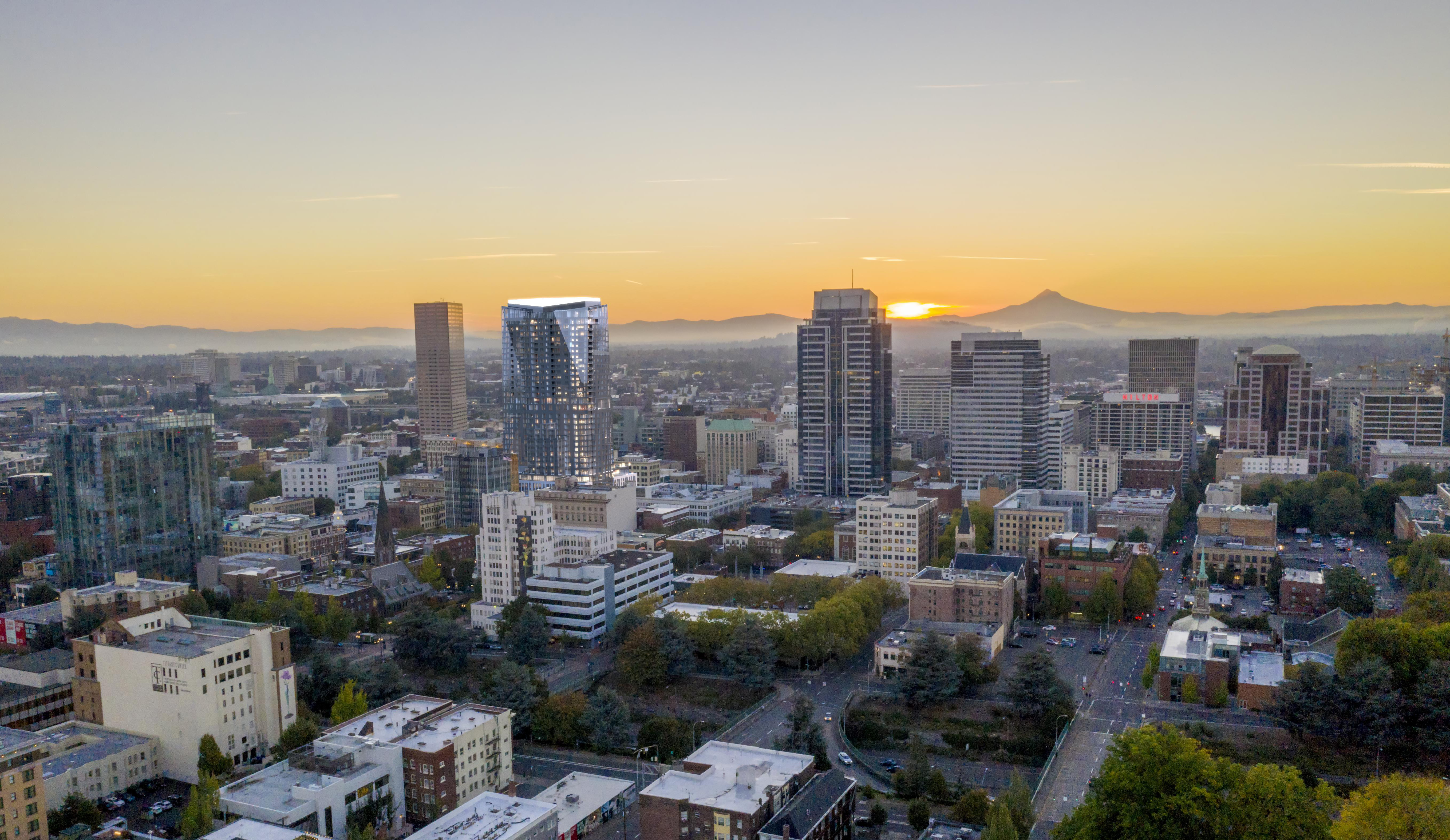
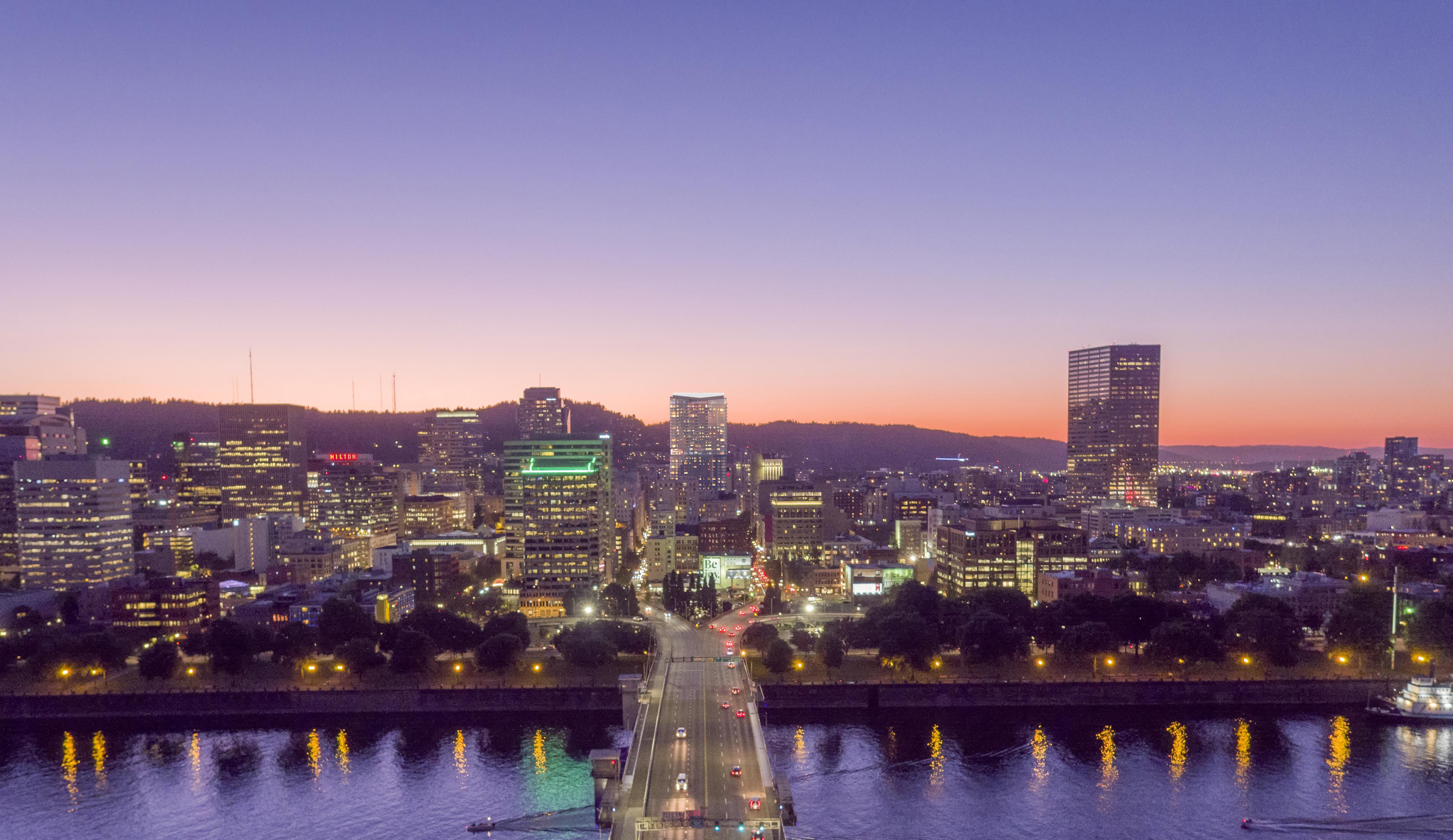
At the ground level Block 216 would include approximately 10,000 sq ft of retail space; separate residential, hotel and office lobbies; a hotel lounge; and parking and loading entries. The entire frontage facing SW 9th Ave would be taken up by a food hall, intended to replicate the energy that the food carts currently bring to the site. An event level at the second floor would include an 8,000 sq ft ballroom, meeting rooms, and a 2,200 sq ft junior ballroom.
The rest of the podium, occupying floors three through seven, would be filled by roughly 130,000 sq ft of office space. The podium would be clad in a honed white precast concrete panels, reminiscent of the nearby Union Bank tower. Each office floor would open onto a series of landscaped roof terraces, which cascade down towards O’Bryant Square.
Levels 8 to 18 in the tower would include 251 hotel guest rooms, a slight increase from the earlier design which used level 8 for office space. Although the brand of the hotel has yet to be released, the developer has signed a letter of intent with a hotel operator. Level 8 will also include a rooftop terrace and amenity lounges for the use of building residents.
Levels 19 and 20 would be dedicated to hotel amenities, including a spa, pool, hotel lounge, fitness center, and a restaurant open to the general public. The pool will be marked on the facade by a recess and the use of a clearer glass than used on the rest of the body of the tower.
The top 15 floors of the building would include 138 residential condominium units, with 10 units per floor on levels 21-33 and 4 units per floor on levels 34 and 35. The developer intends to meet the city’s inclusionary housing regulations by paying a fee-in-lieu, at a cost that was reported last year to be $7.5 million.
The top of the tower will be illuminated by a “light box” assembly, which doubles as mechanical screening.
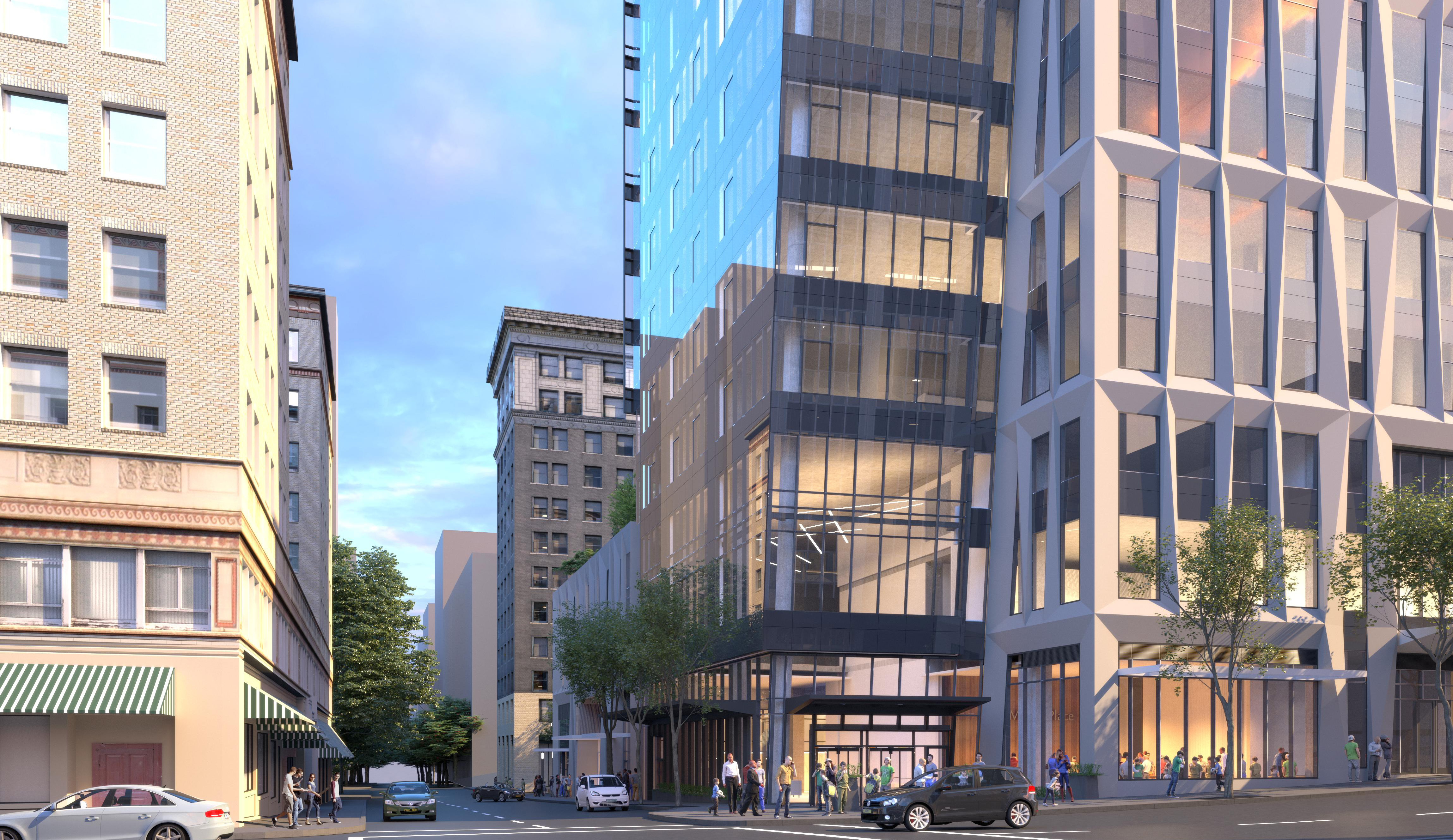
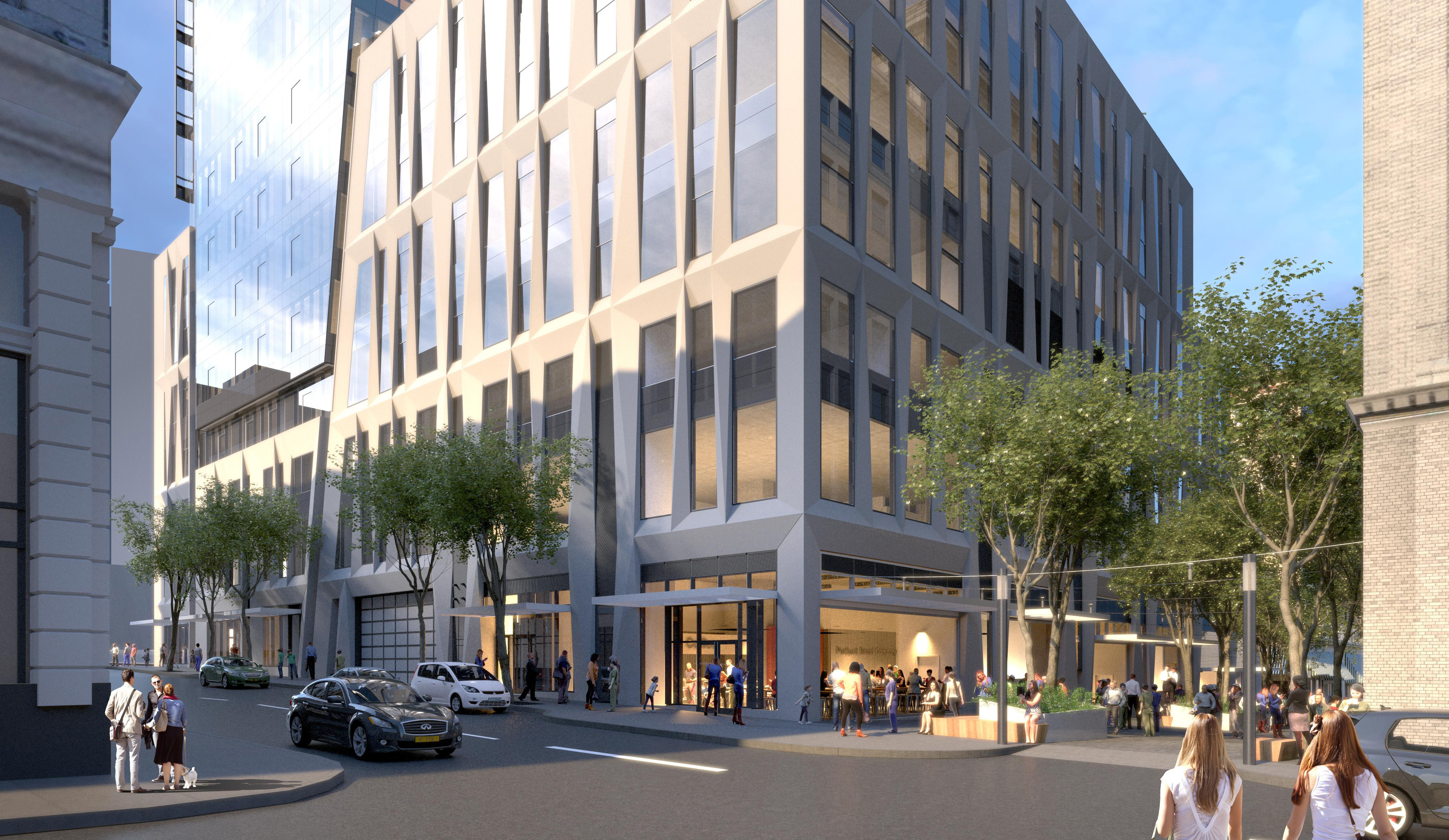
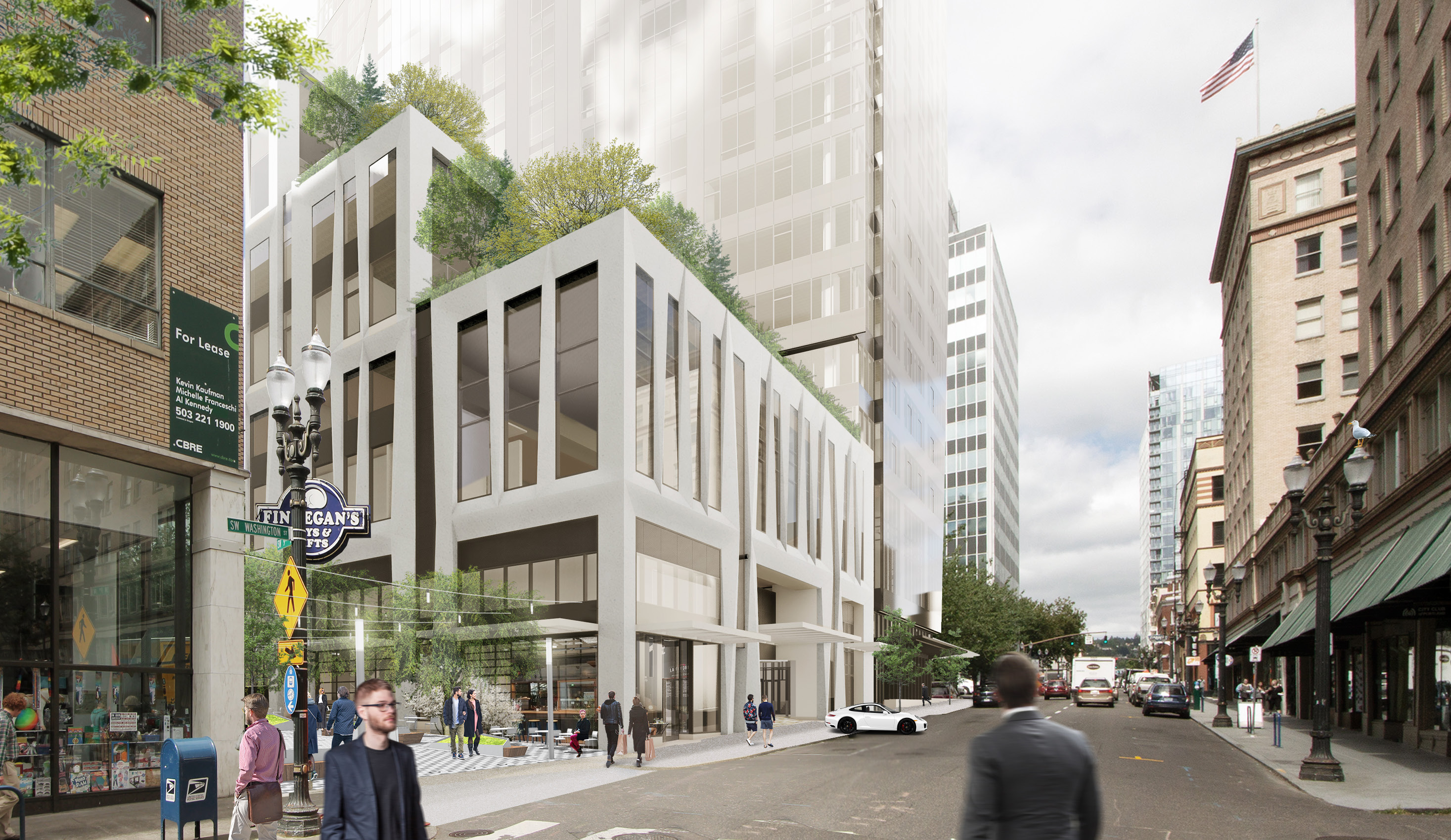
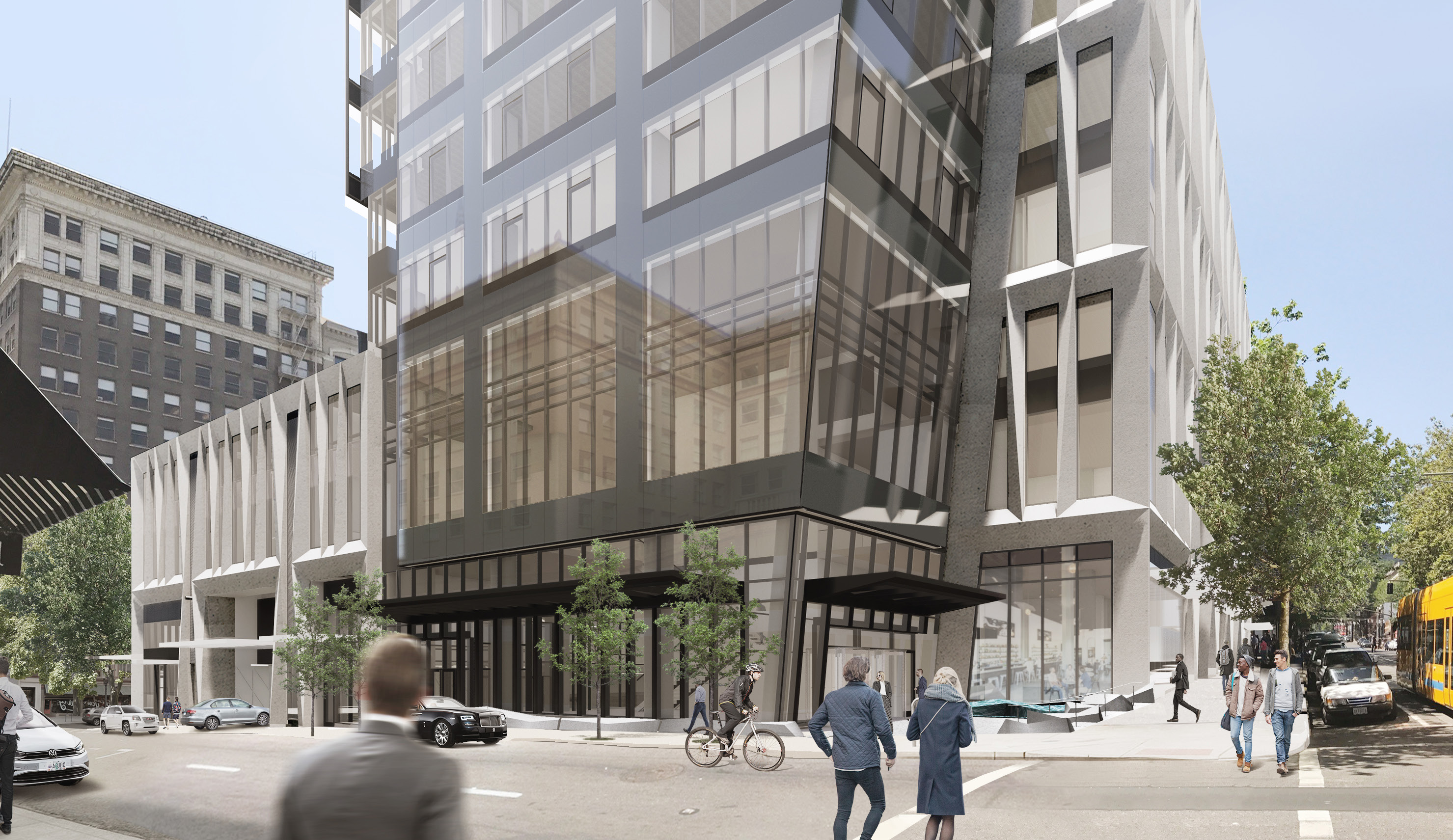
Along SW 9th Ave Block 216 will touch the future Green Loop alignment. A new standard, added to the zoning code for the Central City in July 2018, requires that buildings fronting the Park Blocks set back at least 12 feet from the property line. The applicants requested a modification to the zoning code, to allow this setback to be reduced to zero. In order to better meet the Design Guidelines, as required when modifications are requested, they proposed to build out the first block of the Green Loop, adjacent to their proposed food hall.
The approved design for 9th Avenue will be a non-standard right-of-way improvement. The proposed design for the street would still allow vehicular traffic, but is intended to prioritize pedestrians. Dark and light concrete pavers in a herringbone pattern will extend from building edge to building edge. Street trees, planters and bench seating would be added in the portion of the street currently used for parking. Overhead hanging lights would illuminate the street from above.
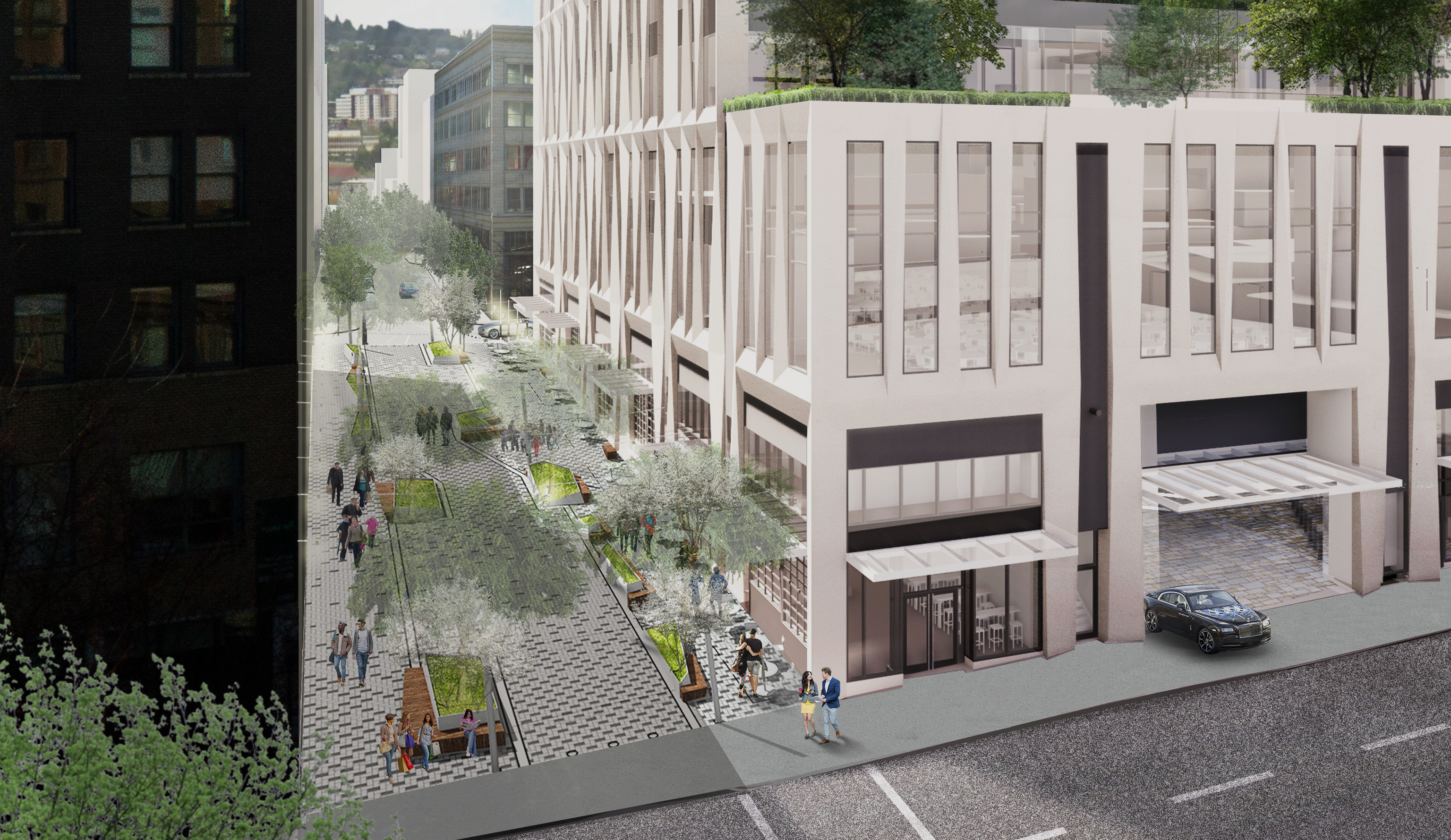
Following a series of Design Advice Requests earlier in the year, Block 216 was approved by the Design Commission at its second Design Review hearing, held on December 13th 2018.
In the Final Findings and Decision by the Design Commission it was noted how Block 216 will retain some of the energy currently provided by the food carts, and how the design of SW 9th Ave could become a precedent for future development of the Green Loop along the midtown Park Blocks:
Since this segment of SW 9th Ave will be redesigned as mitigation for the [12′ setback] standard, and since this segment of the Green Loop is the first in the city to be designed and, likely, the first to be built, it is likely that at least some of the elements proposed for the street design could or will be replicated elsewhere on the Green Loop, creating elements of continuity for the system. While it is not the responsibility of the applicants to design additional segments of the Green Loop, they have proposed how the design elements of the street could be extended to the north and south along the SW 9th Ave and SW Park Ave segments of the Green Loop in the Midtown Park Blocks.
…
Finally, in addition to design and reconstruction of the street, the applicants also propose to mitigate the standard by providing a very porous edge at the ground floor along SW 9th Ave. The ground floor here, which is programmed with a retail “food hall” space along the 9th Ave frontage, creates a unique interface between the street and the interior of the building. This is accomplished with a combination of clear-glazed, folding overhead doors which extend from floor to ceiling in three of the six storefront bays along SW 9th Ave. This affords opportunities for pedestrians and activities to move seamlessly from inside to outside (or vice versa), functionally extending the sidewalk into the building. This blurring of inside and outside is further enhanced by extending the pattern on the street into the interior of the retail “food hall” space, which the applicants demonstrated at the December 13, 2018 hearing.
The other three storefronts along this frontage are programmed with six walk-up food service windows which open into small work spaces inside the building. These walk-up windows are then reflected onto the interior side of these work spaces, creating two-sided retail food service spaces. The walk-up windows facing the street provide for more activity on the street than a standard storefront and also retain some sense of the current, and beloved, food cart character found on the block today.
Buildings permits will need to obtained before construction can start.
Drawings
- Plan | Site
- Plan | Parking P4/5
- Plan | Parking P2-3
- Plan | Parking P1
- Plan | Level 1
- Plan | Level 1.5
- Plan | Level 2
- Plan | Level 2.5
- Plan | Level 3
- Plan | Level 4
- Plan | Level 5
- Plan | Level 6
- Plan | Level 7
- Plan | Level 8
- Plan | Levels 9-17
- Plan | Level 18
- Plan | Level 19
- Plan | Level 20
- Plan | Level 21
- Plan | Levels 22-33
- Plan | Level 34
- Plan | Level 35
- Plan | Mechanical Penthouse
- Plan | Roof
- Plan | 9th Ave (Green Loop)
- Elevations | South and West
- Elevations | North and East
- Section | East/West
- Section | North/South
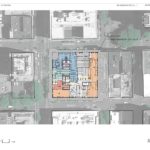
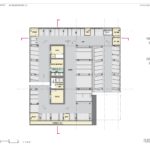
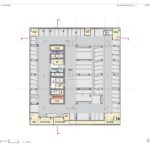
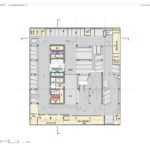
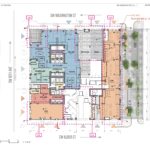
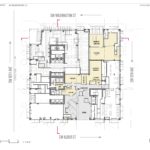
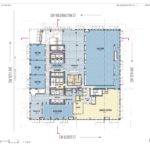
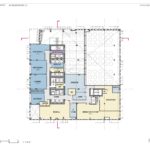
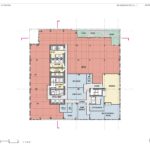
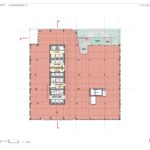
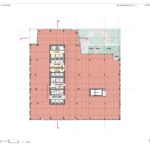
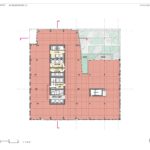
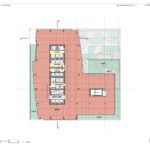
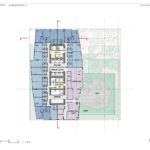
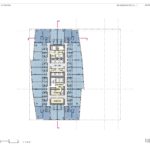
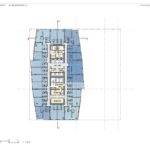
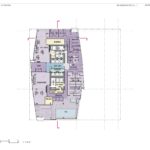
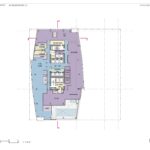
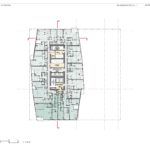
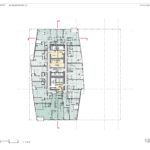
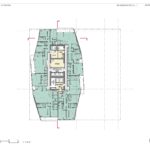
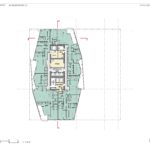
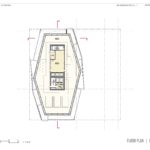
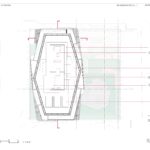
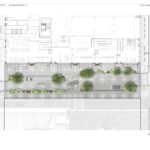
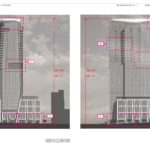
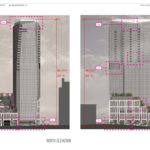
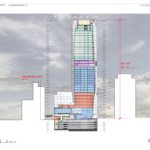
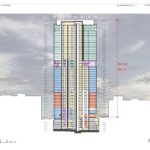
What was the purpose of the setback requirement on 9th, anyway? Having a narrower street is welcome in a downtown of 60′ and 80′ ROWs.
I doubt this thing ever breaks ground
Because?
Because for whatever reason during this building boom any tall building over 21 stories in this town doesn’t get built. It either gets cancelled or becomes dramatically shorter..
See 11West, Oregon Square, 4W, Press Blocks, just to name the few tall buildings proposed latley and what happened to them..
Now, this is a truly beautiful building. If the Goodman brothers could just erect a half-dozen more, we might have a decent skyline befitting a city the size of Portland.
GDB is one of Portland’s best design firms . . . that pool on the 19th Floor will have some nice views of Mt. Hood . . . .
Man who you telling. Our skyline sucks. So tiny. Bellevue Washington skyline kills ours how sad is that
Mark,
How does Rome Italy’s skyline compare with Bellevue’s? Free yourself from conventional thinking about what makes a great city. Height does NOT equal quality.
Height is beautiful too. You can still achieve the walkable utopian concept I think your alluding to with a great skyline. Look at Vancouver BC.
And regarding Rome, stop it that city is old as dirt. Welcome yourself to the new age
I’m not sure what it is about the tallness of buildings that makes them beautiful. Rome may be old, but it continues to thrive without tallness. What is it about old cities that disqualifies them from being beautiful and vibrant? And besides Rome, here are some other low-rise cities generally considered to be desirable places to live and to visit in the present day: Amsterdam, Barcelona, Berlin, Florence, Kyoto, Lisbon, Lyon, Quebec City, St. Petersburg, Thessaloniki, Vienna, Washington D.C., and Zurich.
Agreed. I spent a year and half away from Portland and working in the heart of Washington DC. It has big city urbanity and great walkability without high rises. A skyline is simply urban forms viewed from afar. What’s important is the street life of a city. Last visit to Bellevue, WA, it still felt like an overgrown suburb.
1 US city on that list? You chose DC? Ok if your so bent on international cities pick Vancouver BC or Melbourne.
Portland’s skyline is terrible
Having spent a lot of time in Vancouver BC over a 40 year period, I agree that it has an impressive skyline but having criss-crossed it on foot, I have found many streets pedestrian-unfriendly. I found Melbourne’s downtown to be fascinating to walk around in because of the mix of old and new architecture though some streets are too wide with lots of traffic. Frankly, I do not recall the Melbourne skyline. Portland’s skyline varies depending on where it is viewed from. To balance our skyline, we would need to fill in some blank spots. But walking in Downtown Portland certainly is more pleasant than in Vancouver and Melbourne.
You can always move, Mark.
I certainly hope Portland doesn’t become Rome.
https://www.nytimes.com/2018/12/24/travel/rome-pollution-trash.html
Some days when I walk around and I see so much detritus left around it certainly seems like it.
I certainly do not want to see Portland in ruins, either, but I do not see how the present problems of Rome is somehow an outgrowth of its low-rise skyline. An essentially beautiful city may grow dirty and messy, and an essentially sterile one may be clean and orderly. I’m unaware of any correlation between the building heights of a place and its degree of cleanliness.
In that aspect, we already are like Rome. But worse. We’re an overdeveloped, sprawled out third-world nation. If high rises seemed to fix this issue, you would’ve seen Rome incorporating them into their urban horizon a long time ago but you haven’t. Hell, we’d have incorporated it into our nation’s capitol! High rises show the contrast between the middle and 1% classes. On a street level, they almost always don’t focus on the community while only offer amenities exclusively to their own workers and owners. Take the money spent on the extra ten stories and create a compelling community space or offer a better way of commerce with a central entry. At least north pearl developers are beginning to see this greed in consuming full blocks with on monolithic structure as a detriment and have proposed breaking up the block by designing more unique and diverse 5:1 buildings within a single property. Sure, New York and Chicago have their own place on the urban front, especially when it comes to pollution but they don’t sing like Portland does. Developers need to recognize this if they want their buildings to be smiled upon by community members. Then again, this is for profit so they’ll just sell to investors in Asia before bending the knee to a local community’s wishes.
its atrocious !!!! what ever happed to classy buildings of the 30s
People hated them in the 30’s when they were proposed.
Tim, I’m not saying you’re wrong, but what makes you think this?
what a piece of crap
Pingback: News Roundup: PDX T-Core, Williams & Russell, Multnomah County Behavioral Health Resource Center, and more - Portland Design Pup